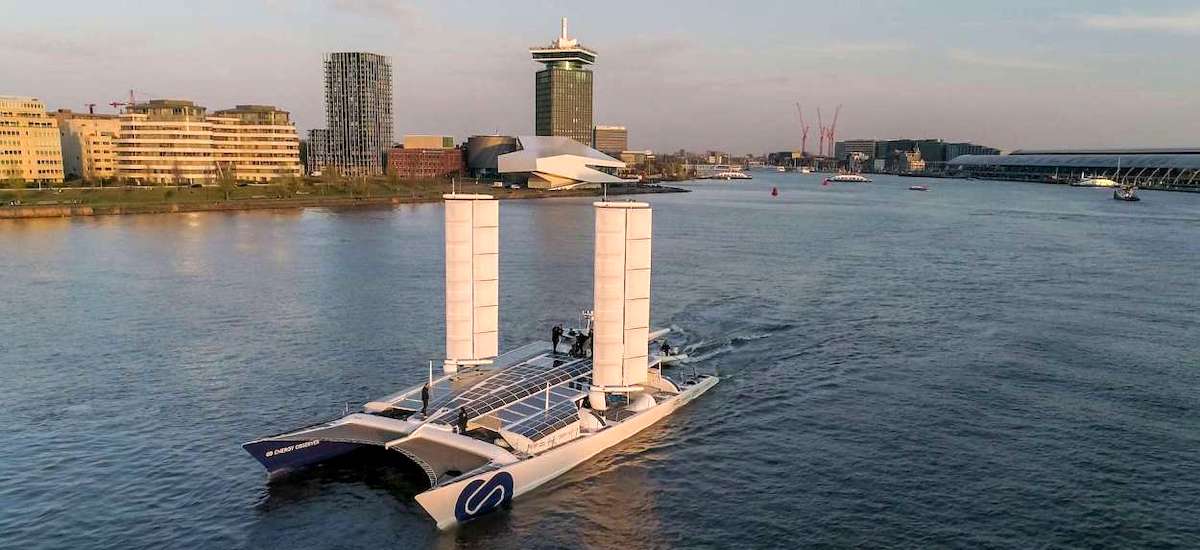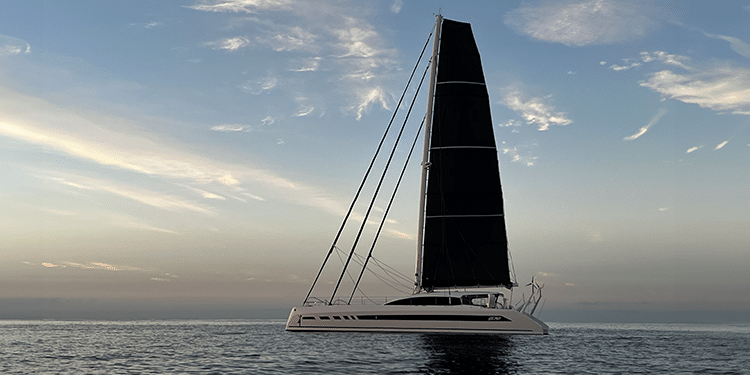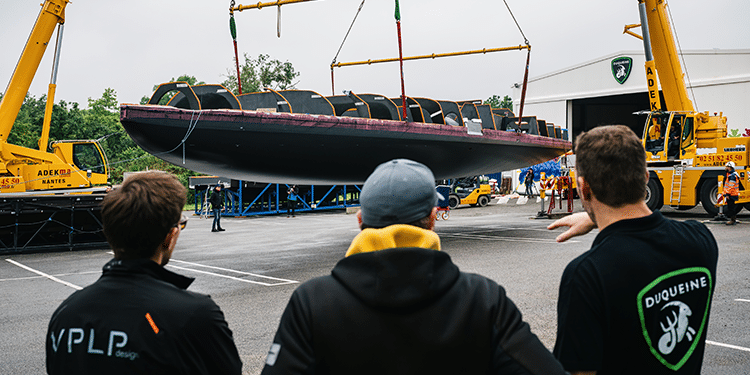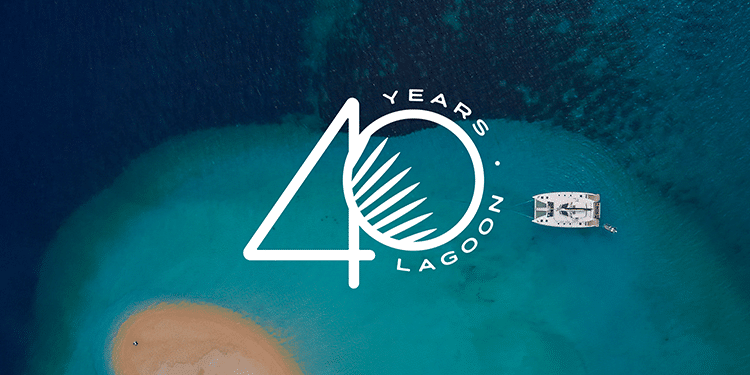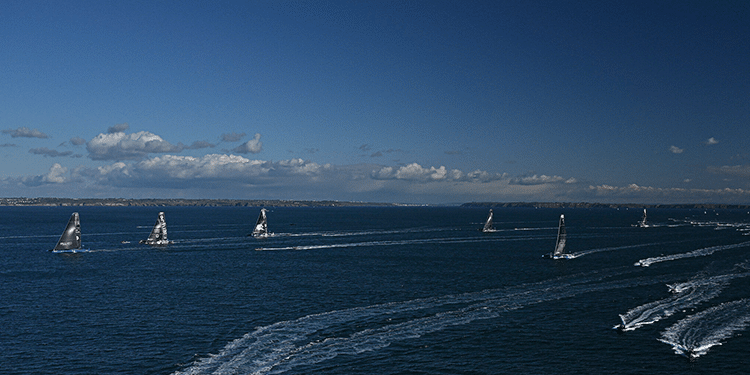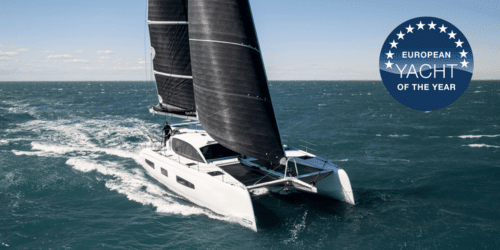Oceanwings is now entering a new phase. Born of the experience gained during the America’s Cup, the automated furlable and reefable wingsail has been in development at VPLP Design for several years. After having tested the prototype on Roland Jourdain’s Gwalaz (built by Tricat) in the spring of 2017, and after concluding an industrial partnership with the CNIM group in 2018, the Oceanwings project is now entering the pre-manufacturing stage with two wings fitted to Energy Observer, the world’s first hydrogen-powered ship.
Two years since the start of her odyssey, the catamaran is currently undertaking a tour of Northern Europe under the command of skippers Victorien Erussard and Jérôme Delafosse. “They got in touch with us because, for this part of their world tour, they are having to face up to a lack of sunshine to power their solar panels,” explains Nicolas Sdez, project manager at VPLP Design. “Our wingsails will be integrating their energy mix.” Hybrid propulsion is the very core of the Oceanwings concept, designed as it was to supplement and enhance other propulsion systems.
“For us, it validates the industrial process we undertook with CNIM,” highlights Marc Van Peteghem. “It’s an intermediate stage between the prototype – which was a resounding success – and production. And we’re also going to see how the wingsails work in tandem, which will be interesting to develop.” For Energy Observer, the system will improve range and open the way to making ocean passages.
The ship will be fitted with two Oceanwings. They will be 10 m high for a sail area of 31.5 sq. m, compared to 21 sq. m for the prototype. Energy Observer should see a significant increase in speed. “Their needs in terms of speed are pretty modest, averaging three to four knots,” says Nicolas Sdez. “Once fitted, the wingsails should double this average.” The goal is also to leverage this improved performance to generate power at sea. “The crew wants to invert the ship’s propulsion system so it becomes a hydrogenerator. That way, they will be able to run their power-hungry electrolyser at sea to make hydrogen.”
In the next couple of years Energy Observer will be undertaking two ocean crossings, one in the Atlantic, the other in the Pacific. In the meantime Oceanwings should be installed on several merchant ships. Expect an important announcement in the coming weeks.
